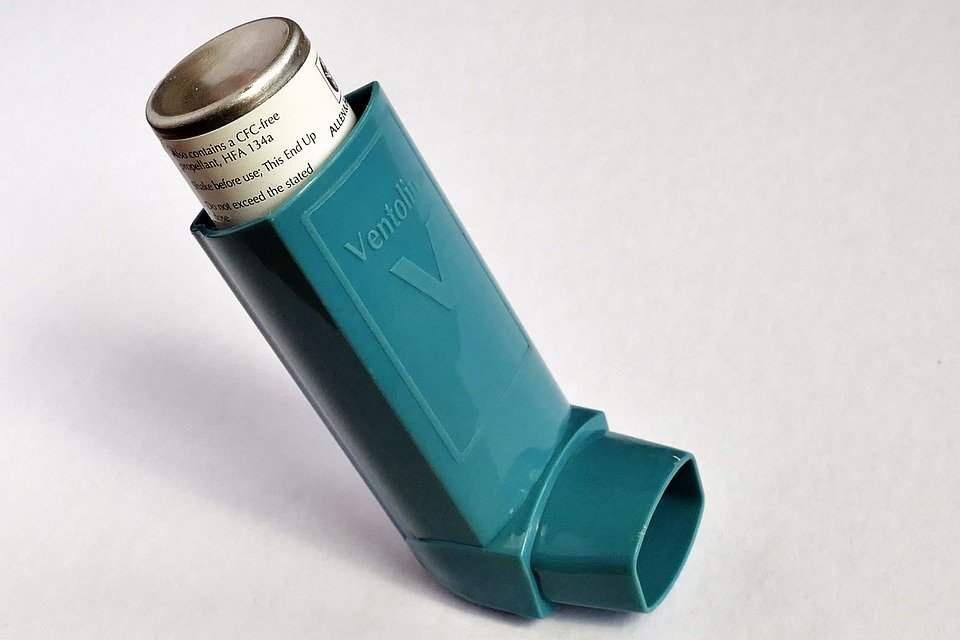Asthma is a chronic inflammation of the airways that affects about one in every ten children. Asthma flare-ups can be scary for both children and parents, so minimizing them as much as possible is ideal.
In a previous blog, we went over the symptoms, diagnosis, and treatment of asthma, as well as provided tips on encouraging your child to take their medication. In this blog, we will focus on fall asthma triggers, the importance of creating an asthma action plan, and ways to encourage your child to use their inhaler.

Fall Asthma Triggers To Know And Monitor
While spring is typically considered the worst season for asthma flare-ups because of pollen, symptoms can be triggered throughout the year. In fact, cooler weather presents unique asthma triggers for a number of reasons:
- Cold air - This can cause the airways in the lungs to constrict, making it difficult to draw deep breaths.
- Viral illnesses - Viral respiratory illnesses are most common during the cold months and can easily trigger an asthma flare. Because asthmatics tend to develop more severe cases of flu, we recommend they get an annual flu shot.
- Fall leaves - Wet, dead leaves can breed mold and spores that irritate the lungs.
- Ragweed - This weed produces pollen that can trigger allergies, which could exacerbate asthma symptoms.
- Campfires - Smoke inhalation can trigger an asthma attack. Make sure your kids don’t sit too close to a fire and stand away from any windblown smoke.
Asthma Action Plan: Why You Need One
The cornerstone of childhood asthma treatment is developing what’s known as an asthma action plan. An asthma action plan takes time to develop, since it involves discovering exactly what triggers your child’s asthma flare-ups. If you aren’t sure what triggers your child’s asthma, it is an important discussion to have with your regular provider. They can help you make observations, review your chart for prior flares, review family history, and order allergy testing if needed.
The goal of an asthma action plan is to pinpoint symptoms and flare-ups so they can be easily controlled. Ask your provider to provide written instructions for your action plan and be as detailed as possible. Whether your child’s asthma medications are for long-term control, quick relief, or in pill or liquid form, having step-by-step directions to follow ensures your child can have the highest quality of life. Make sure your asthma action plan details:
- What treatments to take and when
- What triggers to avoid and when - e.g. pollen, mold, viral infections
- How to deal with flare-ups
- Steps to take between flare-ups
- What to do in an emergency
Asthma Management: Ways To Encourage A Child To Use Their Inhaler
Finally, once a plan is in place, it’s important to involve your children in their own care to a reasonable degree. This will help families manage asthma care more effectively, as well as encourage your child to recognize and manage their asthma as they become a teen and young adult. To encourage children to use their inhaler and spacer and stay involved in their care, try the following:
- Find a special place to keep their inhaler and spacer. It should be kept in a place they can’t forget, such as on their bedside table or on top of their dresser. Pick the right-sized container or box, and let the child decorate it with their favorite stickers to make it their own.
- Wash their spacer together. Show your child how to wash and store their spacer first, and then do it together. With enough practice, your child will feel confident enough to wash it, cap it, and store it on their own.
- Make an asthma symptom checklist. Writing down an asthma checklist together will help your child commit their symptoms and triggers to memory. They can then take this list with them on class field trips or when they stay at a friend’s house.
- Bring the inhaler and spacer everywhere. Get in the habit of bringing it everywhere - on vacation, on a trip to the mall, to a sleepover. The inhaler and spacer then just become part of their routine.
- Coach them on how to communicate their needs. Explain to your child that if they aren’t feeling well, they need to tell their teacher or an adult right away. Make sure they understand exactly what they need during a flare-up - e.g. two puffs from an inhaler using their inhaler, and then five minutes of rest.
- Instill knowledge and confidence. It’s common for children to feel self-conscious or embarrassed about using their inhaler, especially in front of their peers. It is important to arm kids with all the pertinent facts about their asthma - including what triggers their asthma and what they can do to control it. Although they may worry that they will have limitations, once they have control of their asthma, they can live a full and active life. They will feel much better about vocalizing their needs with a positive, upbeat attitude.
If you’d like more information on how to treat and manage your child’s asthma, refer to our asthma FAQs on our website. Capital Area Pediatrics can assist your family whether you need routine or urgent care. If you suspect your child has asthma, you can find the nearest location or request an appointment so your child can be evaluated by a member of our care team. If you’re unsure whether to visit our office or go to an urgent care center, give our staff a call today.


